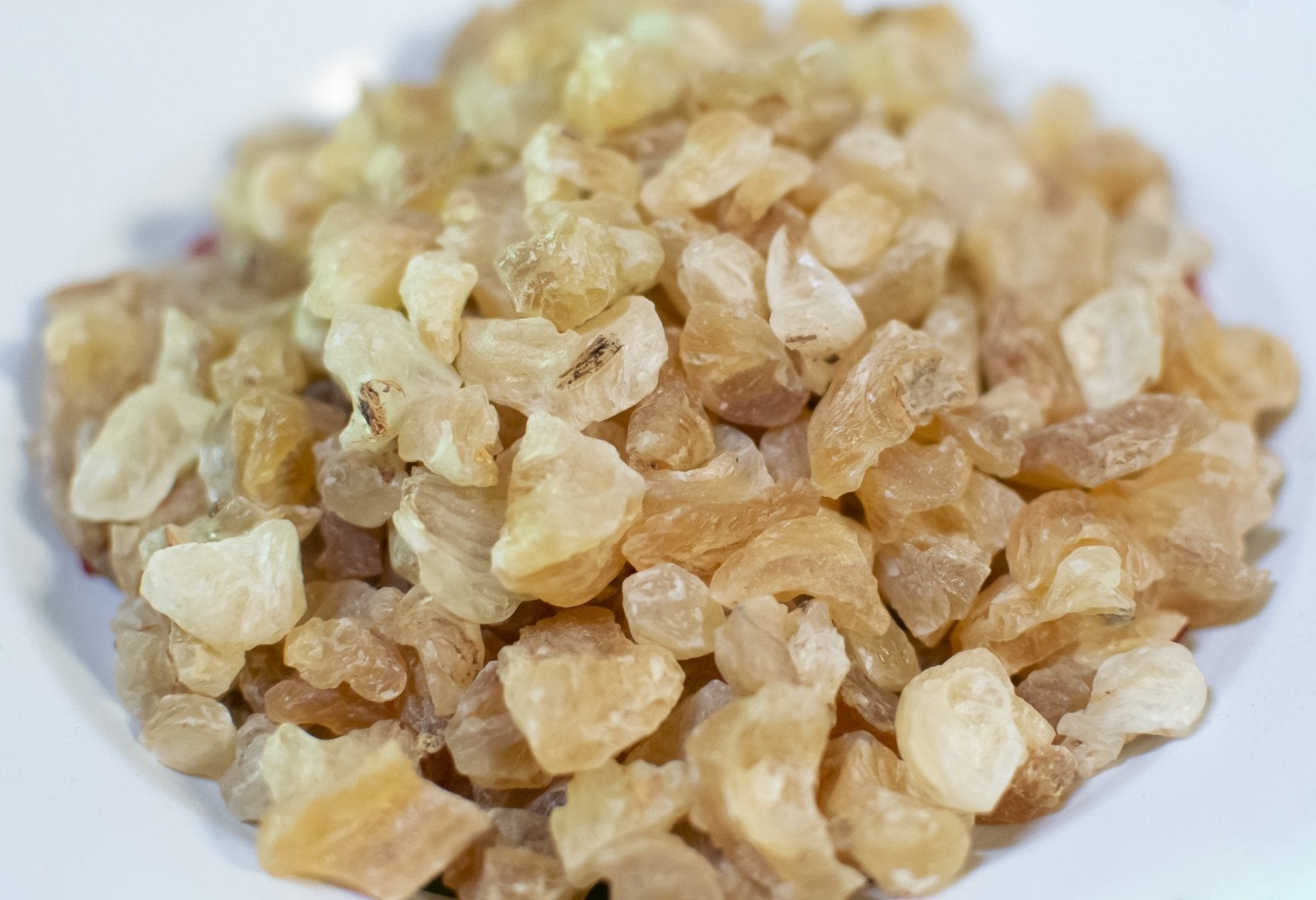
Hydrocolloid: Tragacanth Gum
SUBSCRIBE TO OUR BLOG
Promotions, new products, and recipes.
Tragacanth Gum: The Versatile Gum from the Astragalus Plant
Tragacanth Gum, sourced from the sap of the Astragalus plant, is known for its excellent emulsifying, thickening, and stabilizing properties. What's the story behind this age-old hydrocolloid, and how is it used today?
Historical Context
Tragacanth Gum has been used for thousands of years, with its origins tracing back to ancient Persia. It has been a valuable commodity in trade and traditional medicine⁷.
The Molecular Science of Tragacanth Gum
Tragacanth Gum is a complex mixture of polysaccharides and proteins. Its unique composition gives it the ability to form viscous solutions and stable emulsions in water⁸.
Production and Refinement
Tragacanth Gum is harvested from the Astragalus plant's sap. Once the sap is exuded, it dries naturally and is later collected and processed into a refined gum⁹.
A Multifaceted Ingredient
Tragacanth Gum's applications are vast:
- Food Industry: Used in salad dressings, sauces, and confectioneries¹⁰.
- Cosmetics: Incorporated for its emulsifying properties¹¹.
- Pharmaceuticals: Used as a suspending agent and emulsifier¹².
Tragacanth Gum in Culinary Creations
Tragacanth Gum's properties make it a valuable ingredient in various culinary applications:
-
Salad Dressings:
- Proportion: 0.3% to 0.8%.
- Purpose: Provides stability and consistency.
Conclusion
Tragacanth Gum, with its long history and multifunctional properties, remains a staple in various industries. Its natural origin and adaptability make it a prized ingredient.
See: Hydrocolloid Glossary
For further reading: Pullulan
References:
⁷ Anderson, D.M.W., et al. "The Growing of Astragalus for Gum Tragacanth in the United States." Economic Botany, 1985.
⁸ Balaghi, S., et al. "Compositional analysis and rheological characterization of gum tragacanth exudates from six species of Iranian Astragalus." Food Hydrocolloids, 2011.
⁹ Whistler, R.L., & BeMiller, J.N. "Industrial Gums: Polysaccharides and Their Derivatives." Academic Press, 1993.
¹⁰ Imeson, A. "Food Stabilisers, Thickeners and Gelling Agents." Wiley-Blackwell, 2009.
¹¹ Barel, A.O., et al. "Handbook of Cosmetic Science and Technology." CRC Press, 2009.
¹² Aulton, M.E., & Taylor, K.M.G. "Aulton's Pharmaceutics: The Design and Manufacture of Medicines." Elsevier Health Sciences,


|
About the Author Ed is the founder of Cape Crystal Brands, editor of the Beginner’s Guide to Hydrocolloids, and a passionate advocate for making food science accessible to all. Discover premium ingredients, expert resources, and free formulation tools at capecrystalbrands.com/tools. — Ed |
- Choosing a selection results in a full page refresh.



